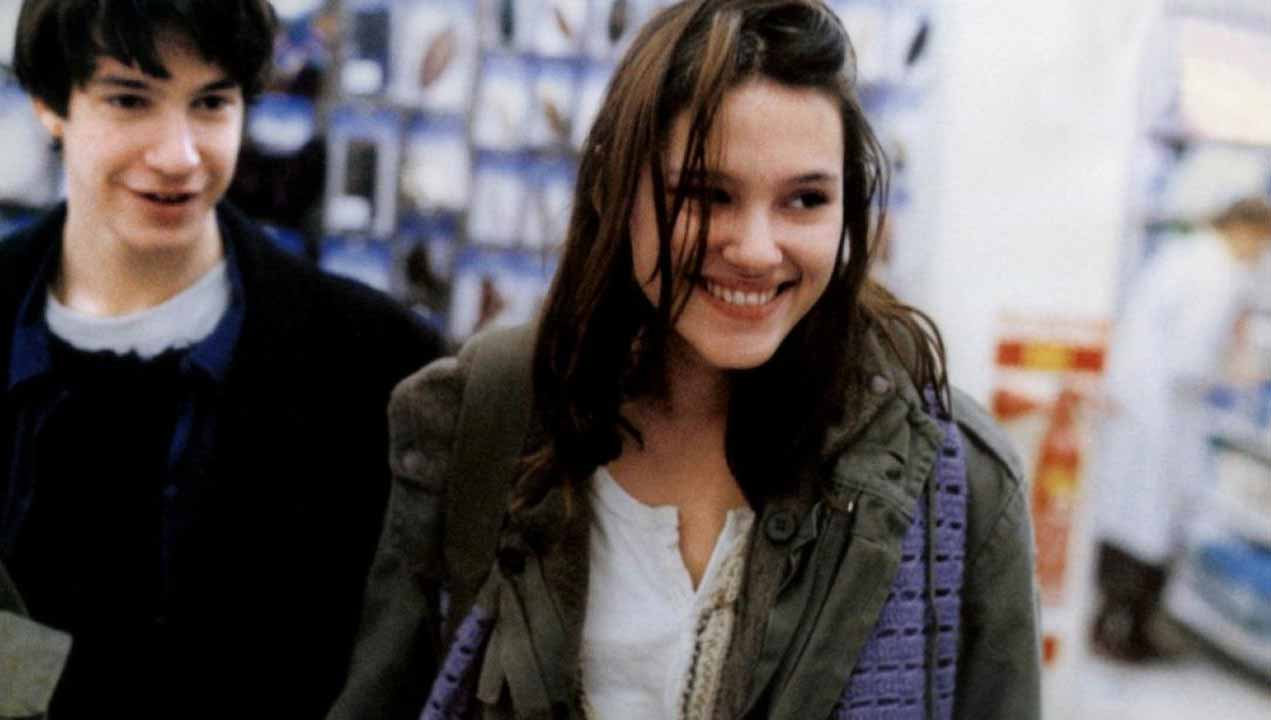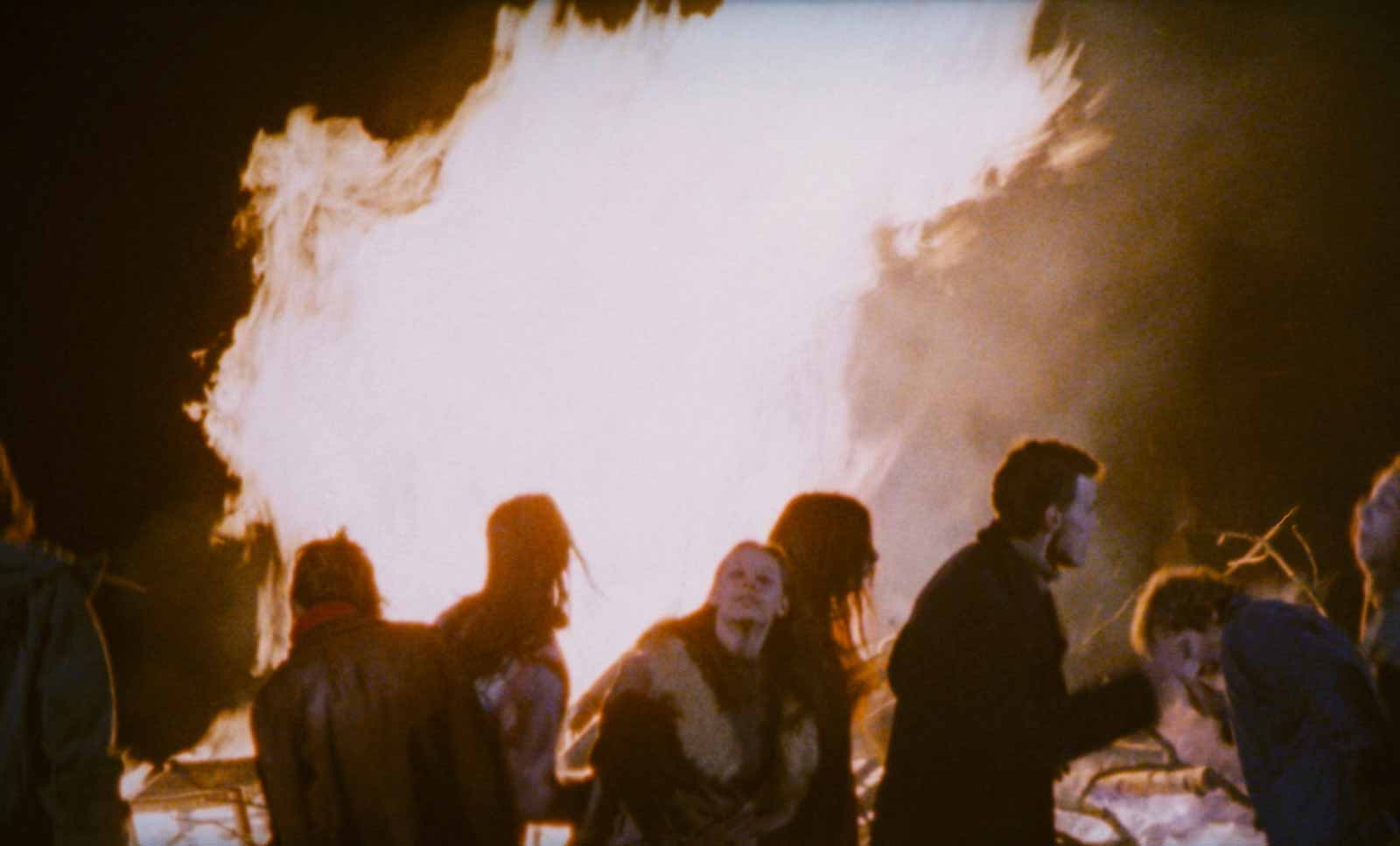Olivier Assayas’s Cold Water arrives belatedly to administer a jolt as bracing as its title. Originally made for French television in 1994, as part of a series of hour-long films, it was released in France at feature length the same year. The TV series, Tous les garçons et les filles de leur âge (the title plays on Françoise Hardy’s famous ballad of teenage loneliness), enlisted a roster of directors that also included Chantal Akerman, Claire Denis, Cédric Kahn, and André Téchiné to address the theme of adolescence at any point between the 1960s and the 1990s, with only a few stipulations: to shoot in 16mm on a minimal budget, to include a party scene, and to make use of the pop music of the chosen period. That last constraint contributed both to the power of Cold Water’s most memorable episode and to the long delay in distributing it here. A quarter of a century later, with rights finally cleared for Bob Dylan, Janis Joplin, Leonard Cohen, Nico, Alice Cooper, Donovan, and the others whose music provides not merely flavor but structure, Cold Water can finally be recognized as a singular masterpiece on the most familiar of themes, the sufferings and misfortunes of youthful passion.
Cold Water is doubly belated. Assayas was already looking back over a distance of two decades to his own high school years in the early 1970s, so that this is a period film even if it often has the uncanny feel of footage captured live. He had already made four features, but Cold Water proved a breakthrough, and he has said that it made him “realize the power of cinema in a way that I’d only had an intuition of before… There was this extraordinary dialogue between my present and my past, and the line was blurred.” That sense of blurred lines will, I suspect, be shared by many viewers who grew up at any time near the era in question. It may be Assayas’s story but, to use Gertrude Stein’s phrase, it feels like everybody’s autobiography.
Working with a largely nonprofessional cast and working with a freedom made possible by relatively lightweight equipment, Assayas seems to call back into existence a lived past. He remarked that “it was like living those times again,” calling the experience “fascinating and disturbing.” Many sixteen-year-olds have fantasized their lives as movies; Assayas provides an eerie sense of that fantasy being realized—as if, instead of going on to a further adult existence, one were condemned to relive in eternity the same sense of being hemmed in by circumstances and impulses, of being so perpetually on edge that to slash the seats in a commuter train or to knock over a display rack in your father’s hardware store barely qualifies as incidental punctuation, in the same category as pulling randomly at your hair or mutely staring down the teacher who is haranguing you for not having done your homework on Jean-Jacques Rousseau.
The initial impression is of quick, disconnected scenes caught on the fly: two brothers eating in a kitchen, listening to their Hungarian nanny hinting at wartime atrocities until she can’t go on; the brothers tussling in a hallway over a transistor radio; the older boy talking in a record store with a girl who’s telling him about being sent to a psychiatric clinic. The boy is Gilles, the girl is Christine, and the film is their story; we’re dropped into their lives like eavesdroppers. In a moment, the dialogue in the record store will turn into a clumsily executed feat of shoplifting; Christine will find herself at the police station making obscene accusations to a skeptical cop, and Gilles will be back in class, slipping the stolen rock albums under the desk while his teacher recites Rousseau. At every turn, a little more information is filled in—about Christine’s divorced working-class parents, the sullen father she despises, her Scientologist mother; Gilles’s dubious dealings in stolen dynamite, his uneasy relationship with his own divorced parents.
But no revelation of backstory is needed to convey what we absorb from the mere presence of the actors. In the persons of Cyprien Fouquet and Virginie Ledoyen, Gilles and Christine present themselves in all their neediness and urgency. It takes only a glance to grasp how besotted the articulate, awkward, aggrieved, and admittedly inexperienced Gilles, a child of privilege, must be with Christine’s air of ferocity and wounded beauty. Fouquet was at this point very much a non-actor, while Ledoyen at eighteen already had a career, and the difference feels altogether right. Gilles is hindered mostly by confusion and resentment, a condition that can make him seem frozen in his tracks, while Christine has the wilier knowledge of someone already acquainted with the territory of madness. As her path takes her back to the clinic, illicitly out again, and then off with Gilles at her side as a permanent fugitive into the void, there is never any question of this particular love story finding a happy ending. It is indeed an old story, but Assayas makes of it much more than another recapitulation of doomed lovers in flight.
Advertisement
In fact, after that early shoplifting scene, Gilles and Christine are not together again until the film’s extended finale. Everything in between is a description of what separates them. The film’s miracle is to give each of the people with whom they come into contact—friends, family, police, teachers, health professionals—a rounded wholeness, no matter how briefly these incidental characters appear. Assayas seizes precisely on the relations each establishes with Gilles or Christine, creating multiple points of view in pointed calligraphic characterizations. Not one is a caricature, though—not even the pompous high school teacher who, enraged by the fact that Gilles is paying no attention to his lecture, violently ejects him from his classroom, or Christine’s angry, beaten-down father who, in the midst of hauling her back to his hardware store after her arrest, finds time to reprimand his assistant for not having shaved. Everyone here, as in Renoir’s The Rules of the Game, has reasons, reasons conveyed mostly not through verbal discourse but through the most fleeting of reactions and gestures.
A world is built out of fragments, with each scene potentially a film in itself. In the confrontation between Gilles and his father, the remarkable László Szabó (a familiar face from Jean-Luc Godard’s Pierrot le Fou and François Truffaut’s The Last Metro) encapsulates in one scene a lifetime’s worth of revelations about the limits, frustrations, and inadvertent failings of parenthood. He attempts to interest Gilles in a painting by Caravaggio, berates him for getting in trouble at school, moves from impatience to anger, smashes a glass ashtray on the floor, subsides in an instant into an embarrassed calm, and finally, almost tearfully, puts his arm around Gilles in an attempt to connect emotionally with a son who accepts the contact but is no more able than his father to heal the gap between them. Assayas constantly takes the measure of such gaps, and the result is as persuasive a depiction as I’ve seen of such generational shortfalls, never spilling over into actorly grandstanding and never stacking the deck.
From these glimpses—Christine being coerced into taking a sedative at the clinic where she has been committed, Gilles practicing how to detonate dynamite, the Hungarian nanny whispering a prayer in the dark—the film’s first half is constructed, a sustained tension leading toward no discernible resolution. At midpoint, there is a sea-change. As Gilles walks with his bicycle through misty autumnal woods, he reaches for a book and begins reading aloud Allen Ginsberg’s Wichita Vortex Sutra in English. It is like an influx of air and solitary plenitude, the first purely aesthetic moment after a succession of constrictions and petty harassments. It’s as if Gilles has found the way out: emerging from the woods and riding his bicycle down the highway, he vanishes into the fog.
And then comes fire, burning in a metal trash barrel, and next to it Christine in close-up, somehow escaped from the clinic where we last saw her. We don’t know where we are, but it’s dark and there are lots of others around, all of the same generation, and Janis Joplin is blaring on the soundtrack, singing “Me and Bobby McGee.” A party—an all-night rave in an abandoned chateau—is in progress and will take up most of the film’s second half. We see Christine distractedly snipping away at her hair with a pair of scissors—and then using them to stab at a friend who tries to take them away. Others intervene; there’s a violent struggle; then it’s over and Christine, all harmless neediness, is hugging her friend.
Gilles will arrive on his bicycle; Gilles and Christine will seize their moment for a long embrace; her mother and stepfather will come in search of her. But the particular narrative of Gilles and Christine is now swept up in the larger swirl, and it becomes apparent that this swirl—the crowd, the generation—is Cold Water’s real subject. If the film’s first half expressed a desperate impulse to escape from the world, this party embodies—by means of noise, darkness, fire, and inchoate dance—the longed-for escape hatch. There is none of the exhibitionism that movies have thrived on, but rather a restless clustering in the cold with music dominating everything as a hash pipe is passed from hand to hand and an enormous bonfire is set. Hardly a word is spoken. The party exists to erase language and erase the world. It seems to go on forever; it needs to go on forever, so that every story can be dissolved in it. Windows are smashed. Furniture is thrown out the windows of the chateau and added to the blaze. The opening chords of Creedence Clearwater Revival’s “Up Around the Bend” signal a new phase of determined destructive energy. A girl with her back to the camera starts dancing with a sloppy insistence that becomes one of the films’ most indelible images.
Advertisement
The party will go on until it has burnt itself out, and the story will go on until, in the chill light of the morning after, Christine and Gilles head out for the paradisal refuge she has imagined into being—a pre-industrial farmhouse with no phone, no electricity. Drifting toward a destination that doesn’t exist, they play out their strand of unappeasable longing in an exhausted foray into what will prove the coldest of water.
Olivier Assayas’s Cold Water is playing at the IFC Center in New York City.



